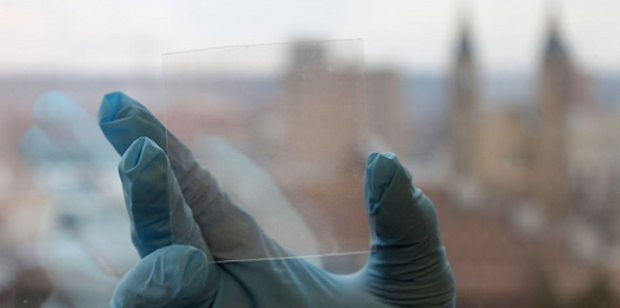The obvious reason why we buy cases for our smartphones and tablets is so that we can prevent physical damage to them, which most often results in cracked screens. Transparent electrodes might help us avoid that altogether.
The problem with modern smartphone screens is represented by the transparent, conductive substance named ITO (indium tin oxide). Unfortunately, this substance is present in virtually every screen out there, from plasma tellies and LCD monitors to the cockpit windows of planes, and has some very serious downsides. First of all, it is very expensive, it’s not exactly an unlimited resource, and it breaks easily.

Yu Zhu, an assistant professor of polymer science, detailed a new method of making unbreakable conductive screens in a study that appeared in American Chemical Society’s journal ACS Nano. The indium tin oxide has been replaced by the team lead by Zhu with a mesh of metal electrodes that has been placed between two layers of polymer.
As Zhu explained, “We expect this film to emerge on the market as a true ITO competitor. The annoying problem of cracked smartphone screens may be solved once and for all with this flexible touchscreen.”
The new type of flexible touchscreens solves all the problems that the ITO has: it’s cheap, unbreakable and it’s made from widely available materials. More than that, since it is flexible, it could be used in more than just smartphones and tablets. More precisely, it could be used in gigantic curved TVs and in wearables such as smartwatches and fitness tracking wrist bands.
University of Akron graduate students Tianda He and Aozhen Xia, and Darrell Reneker, distinguished professor of polymer science at the same university, helped Zhu get to this point.
Hopefully, the transparent electrodes will enter mass production soon, as there are plenty of iPhone users who are crying over their cracked displays. The flexible touchscreen has a few downsides, as well. Unlike glass, it scratches more easily and it feels cheaper. Still, there are plenty of people who would prefer a screen that scratches over one that cracks. Depending on the angle of the fall, the display can be shattered quite easily, and cases, while able to prevent such accidents, make the phone bulkier and heavier. In other words, a screen made of clear electrodes would help a lot.
Be social! Follow Walyou on Facebook and Twitter, and read more related stories about the dual-screen Yotaphone 2 Android smartphone and Samsung’s patent for a dual-screen smartphone.










